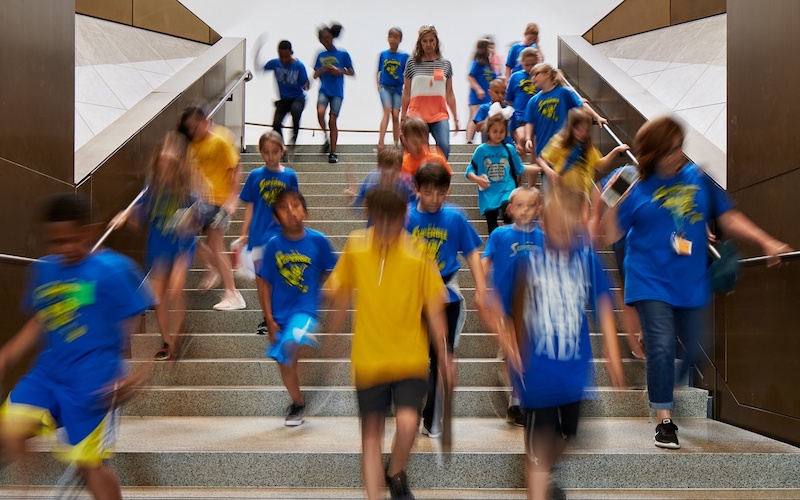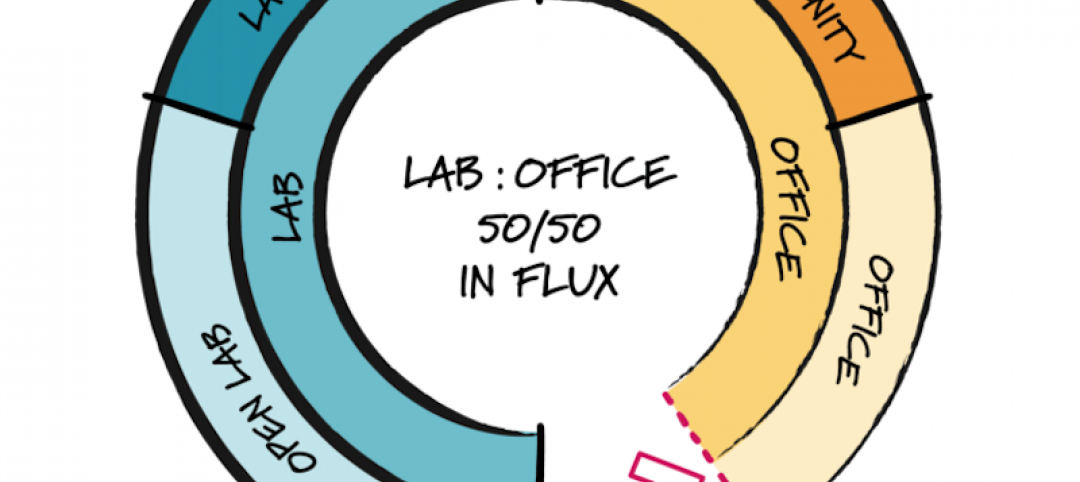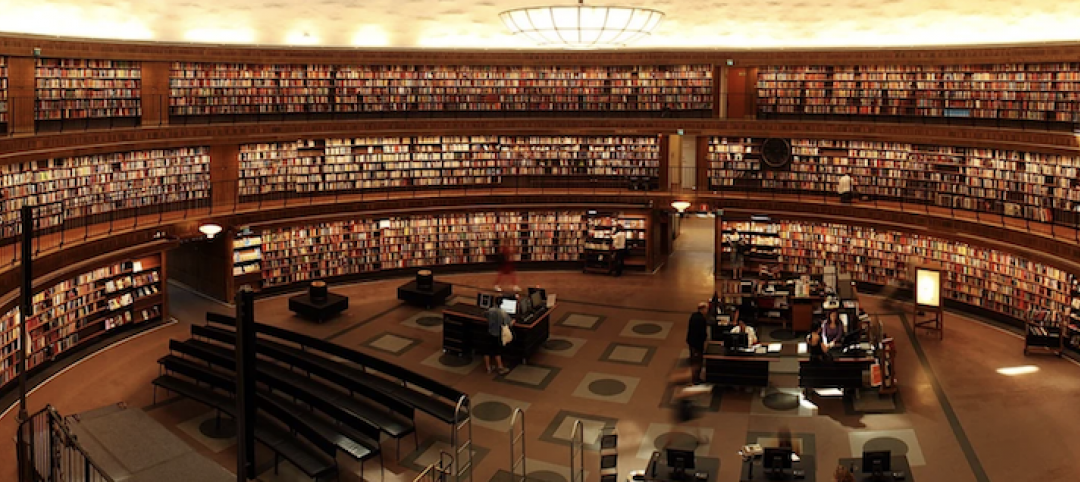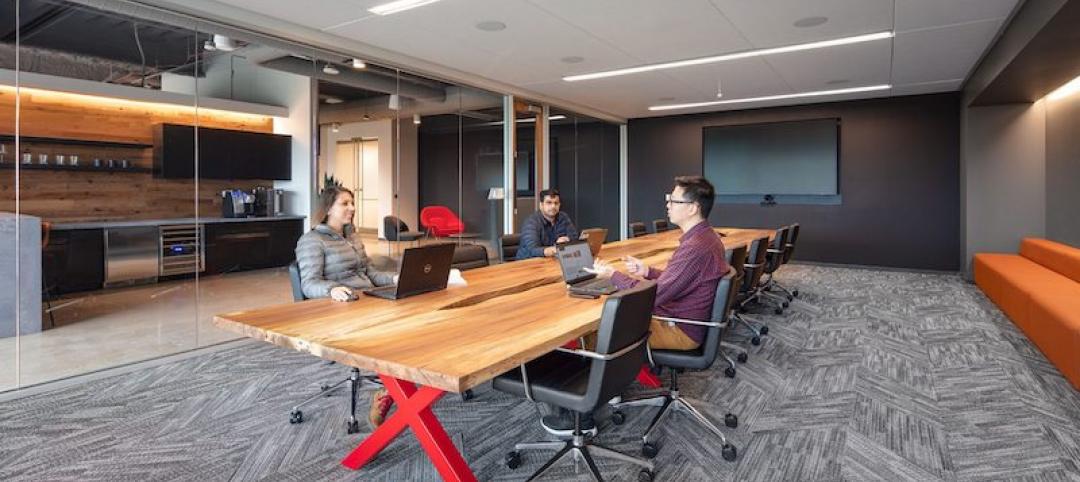HGA’s earlier installments in this series have covered insights that can apply to all museums such as: establishing trust, using clear communication, processing guests while demonstrating safety as a top priority, and leveraging building mechanical systems to combat the spread of COVID-19. Here, we more specifically address challenges and opportunities for hands-on museums serving families and children.
A Safe, Welcoming Return
Many of our museum clients facilitate hands-on experiences. With concerns about transmitting the virus through touch, many of these institutions remain closed with no clear plan for re-opening. The public has expressed that, shy of a vaccine or widespread testing, apprehension will remain about returning to the interactive environments and exhibits that have transformed the museum world over the last half-century.
Over the last three months, we have engaged our museum clients and industry colleagues in conversations about the near and long-term future of hands-on, informal learning environments. One thing we can say with assuredness is that it will be a significant challenge. Facts are changing rapidly as we hear of progress others have made in planning for and implementing re-openings. As planners and architects, we ask, how might we help institutions plan for the future, allowing them to safely provide a vital public service while maintaining revenue streams?
Understanding that safety is paramount, we must look beyond to better understand what today’s challenges might mean tomorrow. While not exhibit designers, we do have a deep understanding of how to create holistic environments wherein learning can thrive. Even if a vaccine is developed, this understanding remains essential. More importantly, this will likely not be our last global pandemic so we ask: how can our built environments better prepare our clients next time around and how might architecture adapt?
 An interactive exhibit at Tennessee State Museum.
An interactive exhibit at Tennessee State Museum.
Capacity & Flow
Within this new reality, reconsidering how we engage with exhibits and one another, and how we flow within these public spaces, is critical. For hands-on museums we need to adjust the planning of exhibit spaces with exhibit design teams to include early test fits that explore alternate flow patterns. We might study the evolution of a traditional black box space to see how it could transform to allow for temporary infusion of controlled daylight and fresh air, and increased indoor-outdoor experiences to help alleviate concerns about enclosed environments. By designing building envelopes from the start with short-term flexibility in mind, a transformation could be deployed during pandemic outbreaks. This could mean performing earlier flow studies of an evolving design or testing the limits of existing buildings and spaces, and then renovating, to foster smooth and rapid adaptation in the future.
 These diagrams illustrate the transformation of an exhibit gallery, reducing exhibit density for better physical distancing (middle) and allowing for increased indoor-outdoor relationships (right).
These diagrams illustrate the transformation of an exhibit gallery, reducing exhibit density for better physical distancing (middle) and allowing for increased indoor-outdoor relationships (right).
For years, museum lobbies have aimed high at making visitors feel welcome in a space that is programmatically and operationally burdened. Over time, lobbies have evolved from traditionally vast, monumental volumes into lively hubs that welcome visitors through visual cues and a glimpse into the museum experience. Today’s spaces are carefully choreographed around a phalanx of essentials like ticket counters, monitors, audio tours, and restrooms. They also provide a place for visitors to rest and recharge. In many cases, lobbies can transform and become event venues and a major source of revenue generation.
However, lobbies become problematic during pandemics. There is often pressure in the planning stages to make these spaces modestly scaled to leave more area for dedicated exhibit space, but this practice may need to change. How might tomorrow’s lobbies adapt more easily to evolving protocols for processing visitors? Can we innovate now to better plan these first-impression environments, so institutions don’t need to re-invent on the fly?
 Lobby concept for Marbles Kids Museum in Raleigh, North Carolina.
Lobby concept for Marbles Kids Museum in Raleigh, North Carolina.
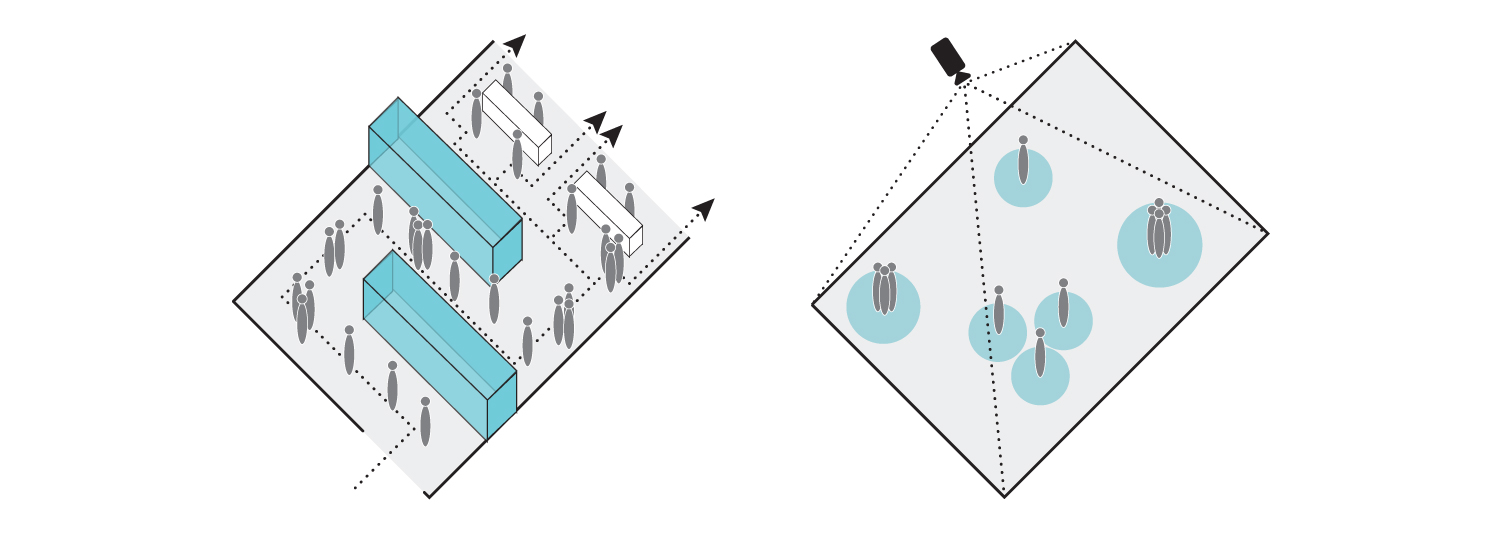 Lobby spaces can provide added space for increased processing, longer queues, and additional program content to ease the wait. Gobo projectors can provide an easy, adaptable alternative to tape on the floor to remind visitors of proper distancing.
Lobby spaces can provide added space for increased processing, longer queues, and additional program content to ease the wait. Gobo projectors can provide an easy, adaptable alternative to tape on the floor to remind visitors of proper distancing.
The design process could include journey mapping of the visitor experience to better understand flow, capacity, and the overall responsibility of the infrastructure. Future museums will have to address physical distancing with more generously proportioned designs to eliminate choke points that cause high-density pressure points. Spaces can always be made more intimate, but it is difficult to convert an already intimate space into something grander when the square-footage doesn’t exist.
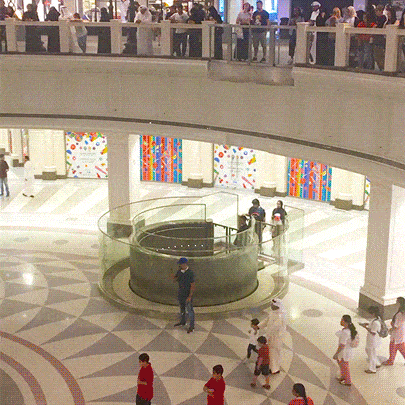 An open lift elevator at The Avenues Mall in Kuwait.
An open lift elevator at The Avenues Mall in Kuwait.
Timed tickets can help control flow into exhibit spaces, resulting in lower density and safer physical distancing. Extended hours can allow institutions to provide longer dwell times or recover revenue from lowered visitor attendance during regular operating hours. Safe distancing is commonly marked on floors, but this often results in a confusing visual cacophony and visitor distraction. Suggested spacing projected onto floor surfaces, or transponders worn around the neck like those recently implemented at the Duomo in Florence, Italy, can alert people to distancing protocols more gracefully.
Elevators are also critical to visitor flow with high physical concentration and potential bottlenecks. We might rethink elevator design in museums and public places that are only required to move patrons between a few floors. We can learn from places like The Avenues Mall in Kuwait that makes use of open lifts to eliminate the enclosed cabs to which we are accustomed.
Exhibits & Engagement
When asked about the future of interactive hands-on exhibits, designers of these environments maintained that we cannot reverse human propensity to gather and learn in group settings; learning and exploring together is an experience we’ve all been conditioned to embrace. While admittedly not safe in the short-term, many believe a day will come when we will return to a more normative condition, so re-imagining spaces with a pandemic lens may not be their top priority. Those involved in media-based exhibits are less impacted by movement away from hands-on learning. However, choice of engagement tools and how they’re deployed has become increasingly important, and the answer doesn’t lie in an all-digital platform.
Institutions can help remove the visitors’ fear of returning through communications prior to their visit via email, social media and their website. This communication can continue in the physical space with mission-driven graphics that complement, rather than compete with, existing wayfinding. Both can clearly and creatively convey the organization’s concern for visitor safety and health. We must consider that some exhibits may be closed for longer periods and give thought to how their closure is communicated. This could be an opportunity to engage artists and exhibit designers to create experiential graphics that deflect from what could otherwise be dismissed as an “out of order” placard.
 A docent-facilitated small group experience at Tennessee State Museum.
A docent-facilitated small group experience at Tennessee State Museum.
Consideration might also be given to interactive experiences delivered by an explainer, one step removed from completely hands-on. Institutions such as Salt Lake City’s Hogle Zoo warn that any kind of “demonstration” in an animal setting should be discontinued in the short-term as visitors tend to lose sight of physical distancing in the rush to experience an up-close wildlife encounter. Perhaps these demonstrations continue on a limited basis in less conspicuous designated areas where distancing can be controlled, instead of removing the experience outright.
First encounters are lasting ones. The Florida Aquarium recently had to train staff on how to over-emote behind their masks to keep children engaged. This small detail was appreciated in feedback from parents. Could care for visitors be demonstrated by elevating it to the level of performance art?
Reconsidering High-Touch Experiences
 An example of a hygienic extension tool. Gadgets like this can be a clever museum branding tool and double as a souvenir for visitors.
An example of a hygienic extension tool. Gadgets like this can be a clever museum branding tool and double as a souvenir for visitors.
If we assume that hands-on experiences will always have a place in museums, how can we plan for a safer short-term return? Tom Rockwell, Senior Creative Director of Global Collaborations at Exploratorium in San Francisco, sees an opportunity for Personal Protective Equipment (PPE) that creates a physical extension to keep visitors engaged in collective hands-on learning while maintaining proper distance. Being able to physically engage via a creatively imagined tool, disposable stylus, or even voice activation, could become a popular solution, without requiring disruptive physical shields and barriers.
Similarly, Paul Orselli, President and Chief Instigator at the exhibit design firm POW!, sees the potential for solo foot-activated experiences (think Tom Hanks on the giant keyboard in the movie “Big”) and digital experiences to replace much-beloved children’s exhibits like ersatz grocery stores, which have long been considered problematic from a hygiene perspective.
While personal audio tours via handheld devices have struggled due to high development costs and confusion experienced by aging and less technologically adept populations, exhibition and planning consultant Daniel Spock notes the potential for a resurgence in their use. Due to their popularity with kids, they may now appeal to a wider audience strictly based on personal safety, and their use can provide valuable data points for institutions. Spock also notes the opportunity for handheld devices to foster interaction with exhibits through their inherent gaming potential. Interactive apps could be highly engaging, 3D and social in nature, without requiring the physical, hands-on manipulation of the exhibit environment.
Lastly, frequent and overt opportunities for hand sanitizing between visitor touches cannot be over-emphasized, as they communicate in real time the importance of visitor health and welfare. This could also be demonstrated by museum staff to foster a joint responsibility to our collective health.
 At the Walker Art Center in Minneapolis sculptures like Nairy Baghramian’s “Privileged Points” are kid-friendly and interactive.
At the Walker Art Center in Minneapolis sculptures like Nairy Baghramian’s “Privileged Points” are kid-friendly and interactive.
Activating the Outdoors
As people emerge from shelter-in-place, they remain wary of crowded interior public spaces. Studies show that the places where people feel most comfortable are open air environments like public parks and zoos where distance can be maintained, and fresh air is plentiful. In contrast with art museums and traditional history and natural history museums where touching has been discouraged, hands-on museums spark the most concern among visitors. How might these institutions re-think their outdoor spaces to provide safety and fresh air while still engaging visitors and communities in rich content and programming?
Bryan Schuetze, Creative Director of the exhibit design firm Space Haus, is looking to the sports industry—where the financial stakes are higher—for cues in how to bring people back together. The Miami Dolphins recently announced a specialized “drive-in” experience for spectators to watch key football footage on the playing field of their home stadium. While strategies like this won’t offset full revenue losses from sold-out stadiums, they can keep fans engaged while making creative use of an expensive venue. This is a great example of adapting an existing condition to a new and unforeseen need.
Outdoor spaces could be thought of as a new formal typology that mediates between inside and out, adapting to seasonal temperature fluctuations. Architects could re-think the use of the outdoors and deploy different systems to transform these spaces on short notice for exhibits, film screenings, lectures, and live performances. Could adaptable structures transform to provide a physically distanced collective experience with outdoor weather protection?
In the case of many theater companies, the immediate solution is moving performers and productions into the streets. Might museums heed this call and follow the lead of institutions like Exploratorium in San Francisco who’ve long been bringing their exhibits into the street with their Studio for Public Spaces?
 Smaller-scaled outdoor pavilions could have transformer-like qualities to provide safe outdoor exhibit environments and weather protection. Like the theater arts, museums might focus on bringing hands-on experiences out into their communities rather than bringing the public inside.
Smaller-scaled outdoor pavilions could have transformer-like qualities to provide safe outdoor exhibit environments and weather protection. Like the theater arts, museums might focus on bringing hands-on experiences out into their communities rather than bringing the public inside.
Answers will become clearer as we continue to discover more about COVID-19 and our resulting behavior. Now is the time to start re-thinking traditional design processes and how museums and their design teams can collaborate to re-imagine the structures that hold our hands-on experiences.
Contributors
Tom Rockwell, Senior Creative Director of Global Collaborations, Exploratorium; Paul Orselli, President and Chief Instigator, POW!; Daniel Spock, Museum Exhibition and Planning Consultant; Brian Schuetze, Creative Director, Space Haus
Illustrations by Glenn Waguespack and Clay Shortall
More from Author
HGA Insights Blog | Apr 8, 2021
Designing lab workspaces in the time of COVID
There are two converging trends that will shape this ratio of lab-to-office in 2021.
HGA Insights Blog | Feb 8, 2021
Prioritizing staff wellbeing: A call to action
Recent studies reveal that more than 50 percent of physicians and one-third of nurses experience burnout, HGA researchers have the details—and the evidence-based design interventions.
HGA Insights Blog | Oct 22, 2020
Envisioning libraries as community hubs
In the following, HGA Vice President and Senior Designer Jane Dedering discusses her passion for libraries, community engagement, and how the current pandemic will influence libraries moving forward.
HGA Insights Blog | Jun 17, 2020
Guiding changes in the workplace: Past, present, and future
Since the COVID-19 pandemic, many companies are managing sudden change as they assess the impact on workplace design and how people use spaces.
HGA Insights Blog | Mar 19, 2020
Technology crucial during COVID-19 social distancing
Technology can help bridge the gap during the Coronavirus pandemic as higher education institutes and corporations are moving to a remote work model.
HGA Insights Blog | Mar 9, 2020
Designing campus buildings through an equity lens
As colleges become more diverse, campus conversation is focusing on how to create equitable environments that welcome all voices.

